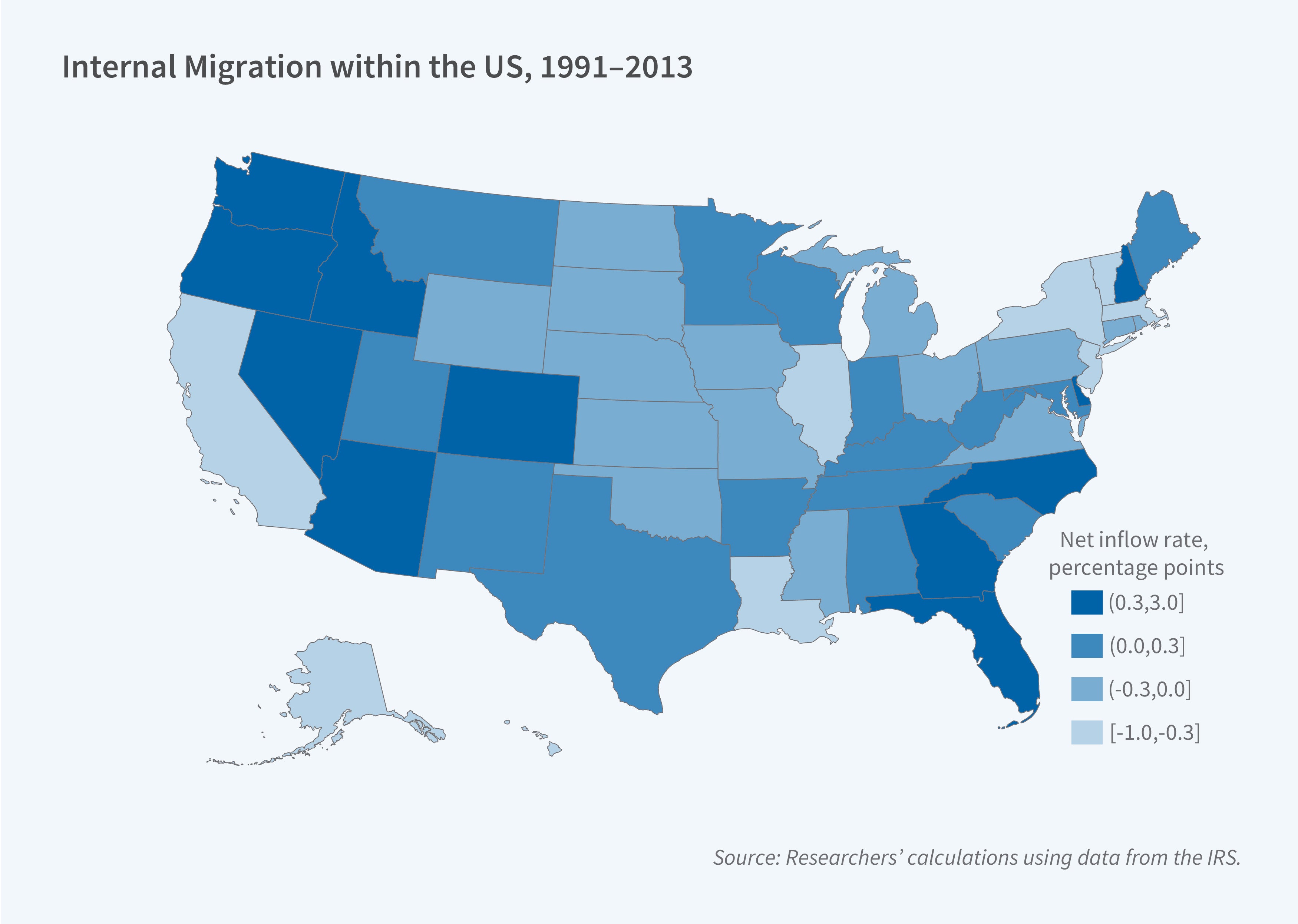House Prices and Declining Internal Migration in the United States

In recent decades, the United States has experienced a decline in internal migration rates. This development stands in contrast to historically high levels of domestic mobility. William W. Olney and Owen Thompson investigate this phenomenon in The Determinants of Declining Internal Migration (NBER Working Paper 32123). They focus on the role of wages and housing prices in determining migration decisions. Findings show that the overall decline in mobility is primarily due to households becoming less willing to move from high to low home price locations.
The researchers analyze Internal Revenue Service data on bilateral migration flows between every commuting zone (CZ) in the United States from 1991 to 2013. They study how wage and home price differences between origin and destination CZs influence individuals’ decisions to move. Consistent with theoretical prediction, they find that migration increases with the wage gap and decreases with the housing price gap between the destination and origin CZ. These findings suggest that individuals are more likely to move to areas with higher wages but are deterred by higher housing prices.
Declining US internal migration rates are primarily due to the decreasing responsiveness of households, particularly older ones, to locational disparities in housing prices.
To better understand the importance of “push” versus “pull” factors, the researchers then separately estimate the effects of wages and home prices in the origin and destination CZ. They find that a 10 percent wage increase in the origin CZ reduces migration by 3.5 percent, while a 10 percent wage increase in the destination CZ induces a 7.8 percent increase in migration. For home values, a 10 percent price increase in the origin CZ is linked to a 1.4 percent increase in out-migration, while a similar increase in the destination CZ reduces migration by 2.6 percent. Overall, these findings suggest that both labor and housing market conditions significantly influence internal mobility, that origin and destination characteristics must be considered simultaneously when analyzing migration decisions, and that migration push and pull factors are asymmetric.
The researchers also analyze why migration rates have declined over time, and find that housing-related factors are the primary driver. They estimate that changes in housing-related factors led to a 3.3 percentage point decrease in migration over time, while changes in wage-related factors actually led to a 2.6 percentage point increase in migration.
Furthermore, the responsiveness of migrants to wages and home prices is driving the decline in migration rates, rather than changes in the levels or dispersion of wages and home prices. Migrants have become more responsive to the pull of higher wages in potential destinations over time, which would have increased overall migration. However, they are becoming less responsive to high origin housing prices. Rising home prices used to be associated with more out-migration, but this has become less true over time. On balance these results indicate that Americans have become increasingly influenced by wage levels in destination locations but are less swayed by home prices in their current locations, with the overall effect being less migration.
The researchers find that the decline in responsiveness to origin housing prices is particularly evident among certain demographic groups, including homeowners, older households, and those with less than a college degree. Residents, especially of northern or urban states such as California and New York, have become less responsive to rising origin home prices and are less likely to move to more affordable locations, like Sunbelt states, compared to 30 years ago.
— Leonardo Vasquez


